The Charm of Campy Horror
Every now and then, my friends and I have these movie nights. We search for the scariest, oldest horror films we can find and watch them till dawn.
What started as a fun night with friends, giggling at the bizarre, low-budget monsters, critiquing the main characters' wardrobe choices, and laughing at scenes that went nowhere, slowly evolved into a captivating obsession. I found myself drawn to the absurd concepts, the entertaining storytelling, and the overall aesthetic—from the fonts to the costumes and everything in between.
Picture this:
INT. DARK CIRCUS TENT - NIGHT
The air is thick and sweet, and the smell of sugar is almost choking. Pink cotton candy cocoons hang from the ceiling, gently swaying in the dim, flickering light.
A Teenager steps inside, his footsteps soft on the strange, rubbery floor. He freezes when he spots a killer clown a few feet away, its painted grin stretched unnaturally wide. The klown is aiming a candy-striped ray gun at a Man struggling to get away.
With a flash of light, the ray gun fires, and sticky pink fibres shoot out, wrapping around the Man in seconds. His muffled scream fades as he disappears into a cocoon.
The Teenager stares, frozen in horror.
TEENAGER
(whispering)
What is this place?
The clown sniffs the air and turns sharply, its glowing eyes locking onto the Teenager. It tilts its head, grinning even wider, and starts moving toward him.
Behind the Teenager, another Killer clown waddles over to a cocoon with a giant curly straw. It jams the straw into the pink fluff and starts slurping loudly, draining the contents inside.
The Teenager stumbles back, bumping into a cocoon. His hand brushes against it, and he gasps when he sees a face inside—pale, motionless, encased in the sugary web.
The first clown raises its ray gun, the hum of energy growing louder as he steps closer.
CUT TO BLACK.
Allow me to break this down for you—a killer clown from outer space (because how else would he get his hands on a ray gun?) transforms people into massive candy floss cocoons and slurps them up like a grotesque milkshake. You did indeed read that correctly. The film is titled Killer Klowns from Outer Space. I strongly suggest seeing this masterwork if you haven't already had the pleasure. It's entertaining, strange, and a classic.
Sure, campy horror movies might not have had the glossy production values of big-budget blockbusters, but what they lacked in polish, they more than made up for with their resourceful creativity and bold, trippy visuals. Despite those limitations, those movies left a mark, an impression that still influences the visual world decades later. An easy example would be the hugely popular, nostalgic Netflix series Stranger Things. But there is more - there are even runaways inspired by the world of horror. It's so amazing to see how these low-budget gems are still inspiring and shaping our visual landscape.
So, let’s dive into why these films, with their flaws and all, might just be some of the most brilliant design lessons out there. Buckle up—it’s going to be a wild, blood-splattered ride!
The DIY Aesthetic of Campy Horror
Horror movies from the 70s and 80s show us something pretty amazing—working with basically no money actually made filmmakers more creative, not less. Instead of high-tech equipment, they'd raid hardware stores and kitchen cabinets. These filmmakers had to MacGyver their way through production, turning duct tape, fishing wire, and sheer ingenuity into unforgettable cinematic magic.
Ever seen Evil Dead? Sam Raimi and his crew weren’t some Hollywood big shots; they were just a bunch of broke film nerds with a dream and no budget. But that’s what makes it so brilliant. They didn’t have money for fancy effects, so they made do with what they had—and it worked. Fake blood? Forget the super expensive stuff; you just need buckets of corn syrup from the local grocery store. And those creepy demons? They had this jerky, clunky movement thanks to stop-motion animation. It wasn’t smooth or polished, but that’s what made it so terrifying.
Then there’s The Thing, where grotesque, goopy, absolutely disgusting (in a good way) monsters were made using whatever they could get their hands on. Rob Bottin went absolutely nuts with the practical effects. His monsters are so uniquely terrifying that they’re still referenced today.
Another very notable example - The Brain. This movie feels like someone's acid-trip nightmare. It has a huge, throbbing brain monster that appears to have been constructed out of every repulsive item they could locate at the hardware store. The effects team had the tough job of making a giant brain look both gross and oddly realistic, so they got creative with rubber, slime, and some mechanical parts. The result? Classic 80s horror at its best, a throbbing, writhing beast that is equal parts silly and unnerving.
The Power of Practical Effects
Why do you think we are more scared of those old school DYI monsters than those super fancy CGI effects? Maybe because those monsters feel more tangible. They were physically there, on set, so they seemed, they seem more real. Sure, you know it's rubber and mechanics, but there's this primal part of your mind that goes "holy crap, what IS that?”. Sometimes even the actors had no idea what was about to happen, so their screams are genuine. We all know this iconic scene in Alien—the chest-burster scene. Ridley Scott didn't tell anyone what was actually going to happen during this scene. The script simply said, "The thing emerges.”
KOTTO: Oh man! It was real, man. We didn't see that coming. Can you imagine, we're struggling with this guy, and here we are acting. You know they are going to do something, you don't know what, then all of a sudden this thing splats in front of you, and it breaks loose. We were freaked. The actors were all frightened. And Veronica nutted out.
O'BANNON: This jet of blood, about three feet long, caught her smack in the kisser.
CARTWRIGHT: I didn't have to do anything. I didn't have to say, "Oh, I'm acting now." Your reaction is just going off what you're seeing. It was totally a visceral thing. That huge thing of blood hit my face and I backed up and flipped upside-down. It was on the dailies, it was hysterical. But that was it. It was a one-off: Everyone's reaction was totally real.
You can find the interview here.
You can't fake that kind of raw reaction. These effects hit harder because they exist in real space. The actors can touch them, react to them, and that authenticity bleeds through the screen.
Let's have a look at a few examples of how filmmakers used to turn weird objects into special effects:
Alien (1979) - KY Jelly, a brand of lubricant, was used to give our main character its slimy appearance.
The Evil Dead (1981) - Do you remember those terrifying Deadites? Their teeth were made from chicken bones, ermmm what?
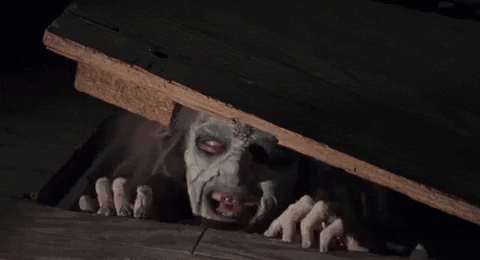
The Fly (1986) - Ok, so this is one of my favourite movies. I mean, don’t we all love Jeff Goldblum? They used condoms to stimulate bulging veins and pulsing skin during the transformation scene.
The Thing (1982) - filmmakers used ramen noodles (!) to add texture to the creature. Mix of some goo, prosthetics, ramen noodles and voila!
Scanners (1981) - Ok, now this one is super clever - bubble wrap was used as blistered and burned skin in Scanners. How cool is that!?
What’s really cool is how these filmmakers didn’t just work around their low budgets—they used those limitations to create something totally unique. The flaws and rough edges weren’t things to hide; they became part of the personality of the film. The funny thing is, these old movies stick with you, whether you're screaming or laughing (sometimes both at once). They leave a mark and make you smile. Looking at what's coming out now... I don't have this feeling. I am not as excited. It feels like we're caught in this loop of remakes and reboots, each one a little more polished but somehow less memorable than the last. Not long ago, I saw a note from Ted Gioia with a box office for 2024 - all top ten movies were sequels.
When was the last time you left a theatre thinking, "Wow, that was something else!"? The old stuff might've been rough around the edges, but at least it was swinging for the fences, you know?
The Bold Visual Language of Horror Movies
Growing up obsessed with horror films wasn't just about the movies themselves - it was this whole vibe, you know? Imagine this: I was that kid with one deep red accent wall (because of course I was), plastered with these incredible vintage horror posters. Each one was like its own little world of twisted art that my parents probably worried about, but man, did they make that room feel alive.
Remember those Friday nights at the video store? For anyone who grew up in that sweet spot before streaming took over, those places were like temples of endless possibilities. You'd walk in and get hit with this wall of artwork - each VHS cover trying to outdo the next in grabbing your attention. These weren't your modern, play-it-safe movie posters. Those things were wild - painted nightmares that practically jumped off the shelf and dared you to take them home.
Let's take The Texas Chainsaw Massacre for example, the poster features a haunting tagline: “Who will survive and what will be left of them?” alongside a hand-painted depiction of Leatherface mid-swing with his chainsaw. You see it, and you can already imagine the hopelessness of movie characters. Same with Wes Craven’s Nightmare on Elm Street - we can see Nancy in bed as Freddy’s clawed glove looms menacingly over her. Nightmare fuel.
Then you've got the Puppet Master series, which is like this crazy evolution of style across a whole franchise. Each poster had to remind you of the original - you've got those signature puppets - but also had to bring something new to the table. They played with different compositions, different colour schemes, but always kept this dark, twisted toy box vibe. It's like each poster was saying, "Remember those nightmares you had about the last one? Well, buckle up.”
And then there is Terror Vision. This movie is basically what would happen if you took every weird 80s trend, threw it in a blender with some B-movie alien effects, and poured it onto film. The whole aesthetic is this crazy mix of punk rock, new wave, and tacky luxury, complete with a satellite dish that beams in a garbage-eating alien. The practical effects for the monster look like something between a trash heap and a rejected Muppet, and somehow that makes it even better.
If you look closely, you can see the designs from those vintage horror films everywhere. They creep into album covers, streetwear collections, artisan beer labels, and even restaurant logos, in addition to the obvious areas like contemporary horror movie posters. It resembles this visual DNA that is constantly changing and manifesting itself in the most unlikely ways. You'll see a coffee shop logo that feels like it belongs in Creature from the Black Lagoon or the album art for an indie band that looks like it could have been from a forgotten horror movie from the 1970s.
Here are some cool examples of how this influence still pops up:
Midsommar (2019): The poster’s surreal, painterly style mixes serene floral patterns with something darker and unsettling, a direct nod to the dreamlike visuals of Suspiria.
Billie Eilish’s When We All Fall Asleep, Where Do We Go? (2019): The eerie cover with Billie sitting on a bed, her haunting expression and the moody lighting, feels like a modern take on the unsettling imagery from posters like A Nightmare on Elm Street.
Stranger Things (2016–present): You probably saw this one coming, right? The show’s glowing, 80s-style logo channels the bold typography of classic horror titles like The Blob. It’s retro horror vibes done perfectly.
Craft Beer Labels: Brands like Three Floyds go all out with hand-drawn designs that look like something from The Evil Dead or Re-Animator—bold, gory, and a little wild. It’s the same campy, tactile charm that made old horror posters so memorable.
You’ve got to love the irony—these filmmakers and designers were just hustling to pack theatres for the weekend, but they ended up creating something that just won't die (pun definitely intended). I mean, who would've thought that Creature from the Black Lagoon would end up influencing runway collections like Jeremy Scott's horror-inspired 2019 Moschino line? Those designs keep coming back, showing up in new ways. It’s proof that this style has serious staying power, much like Freddy Krueger showing up in your dreams when you least expect it.
The Legacy of Imperfection in Modern Design
What was once a by-product of low budgets and limited technology has now become a deliberate, celebrated style. The grainy, gritty, imperfect visuals of old horror films—weird textures, bad lighting, and handmade effects—didn’t just define a genre; they put the foundation for an entire aesthetic. You can see their influence everywhere, from TikTok edits to indie video games: imperfection can be a vibe.
The rise of lo-fi and analogue aesthetics in digital media shows how much we still love that raw, unpolished look. Social media creators add grainy filters and light leaks to their posts, chasing the same moody, atmospheric feel that used to come from old film stock. You can dive deeper into this in an article where I explored it further. Games like Undertale and World of Horror tap into that nostalgic unease with pixelated graphics and retro vibes, making you feel like you’ve stepped into a forgotten VHS-era nightmare.
The static, the grain, the tracking errors—they’re not glitches anymore, they’re intentional. Because let’s face it, the scariest things are often the ones that feel just a little off, a little broken, and just real enough to get under your skin.
The Genius of Campy Horror
So what is the genius of campy horror? Maybe it’s the way that they leave this lasting impression, the nostalgia, the smile on your face when you remind yourself that the big blob monster was made out of shaving foam. Maybe it’s that decades later, designers are still sampling from this play book. We are deliberately using glitches, grainy textures and filters to make footage look more like this worn-out VHS tape. Maybe the genius of bad effects and old horror movies lies in all those imperfections and resourcefulness.
The genius of campy horror is that it shows us creativity doesn’t have to be perfect to make an impact. In fact, it’s the flaws that make it feel real and raw, giving it a lasting charm. Sure, the monsters were fake, but the mark they left behind? That’s as real as it gets.
Catch you next time,
Marta




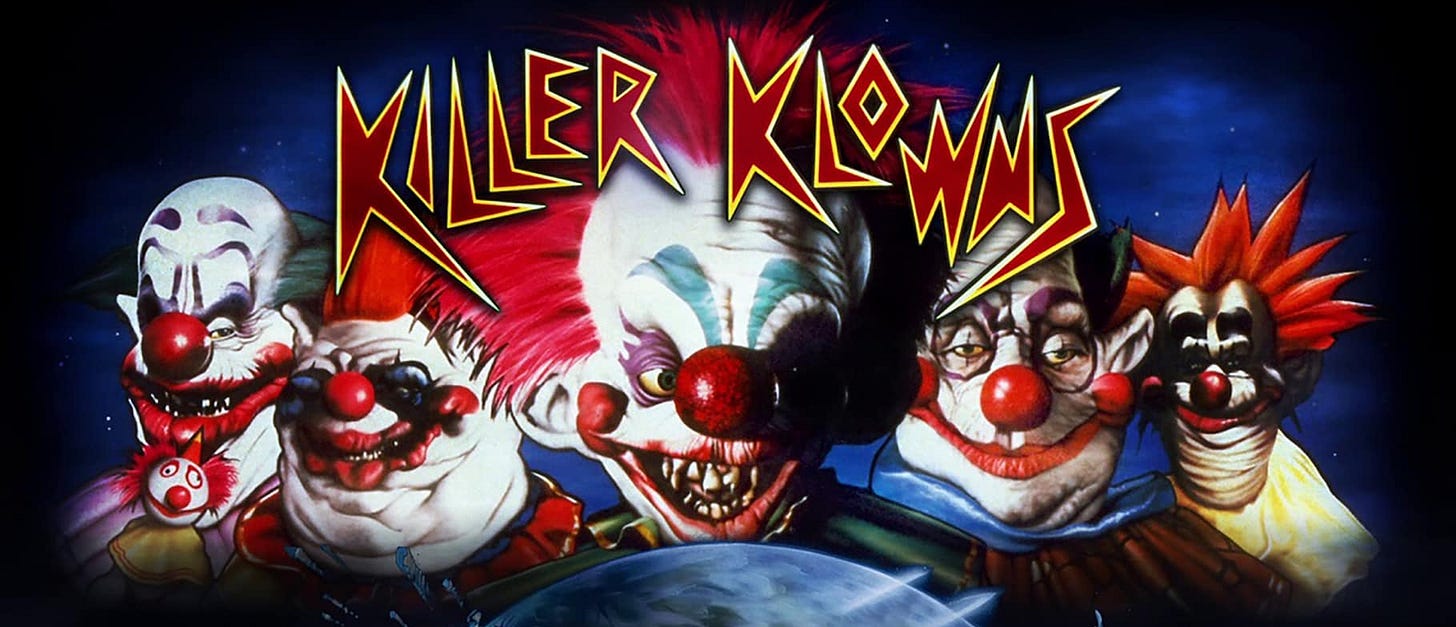
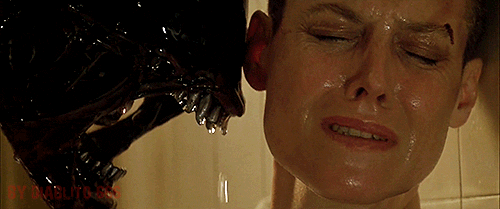
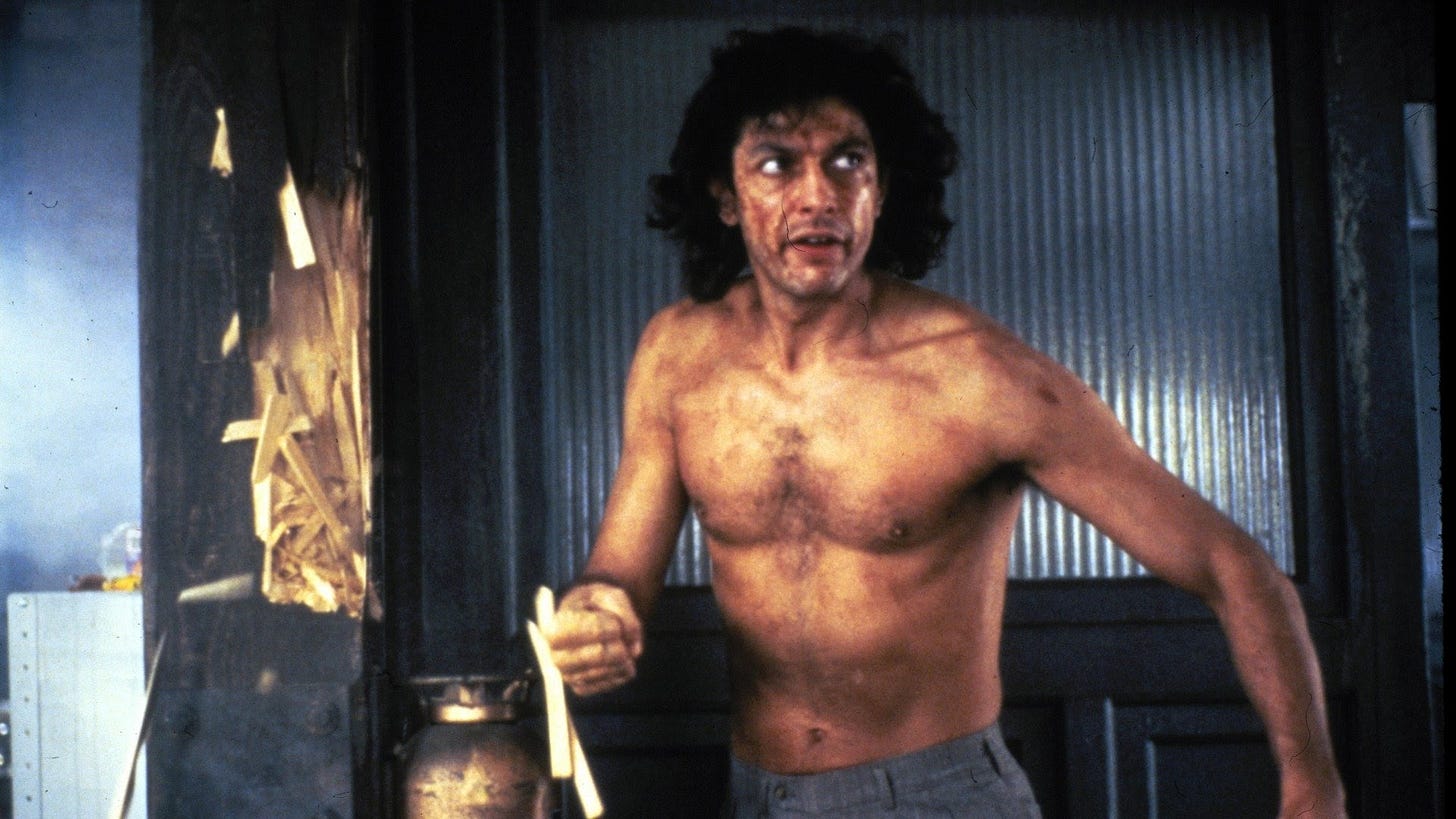
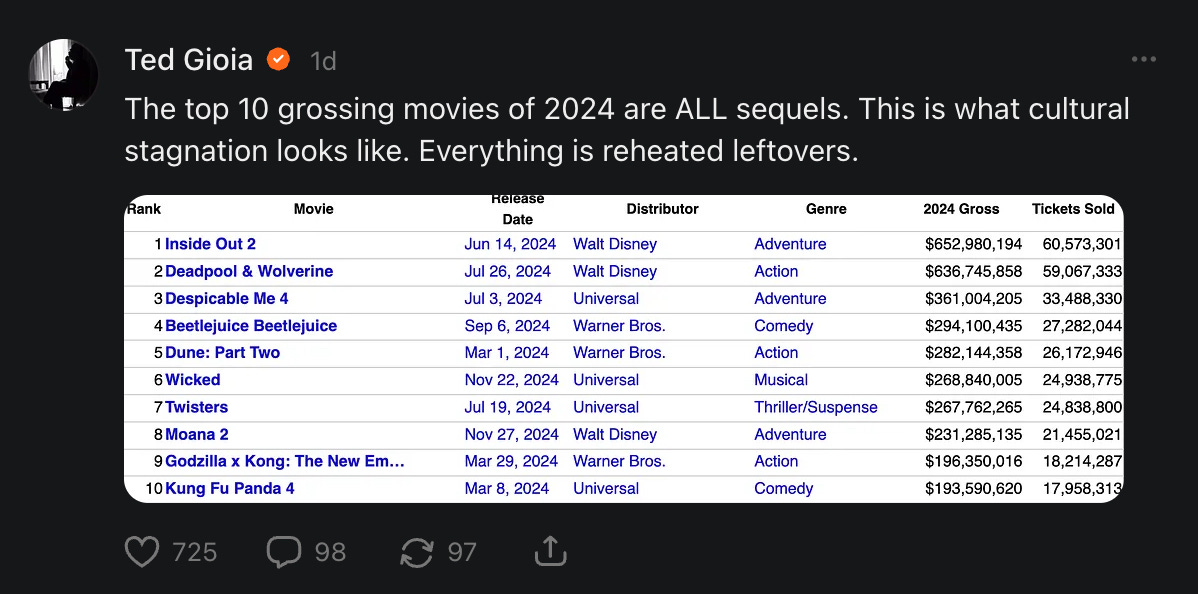
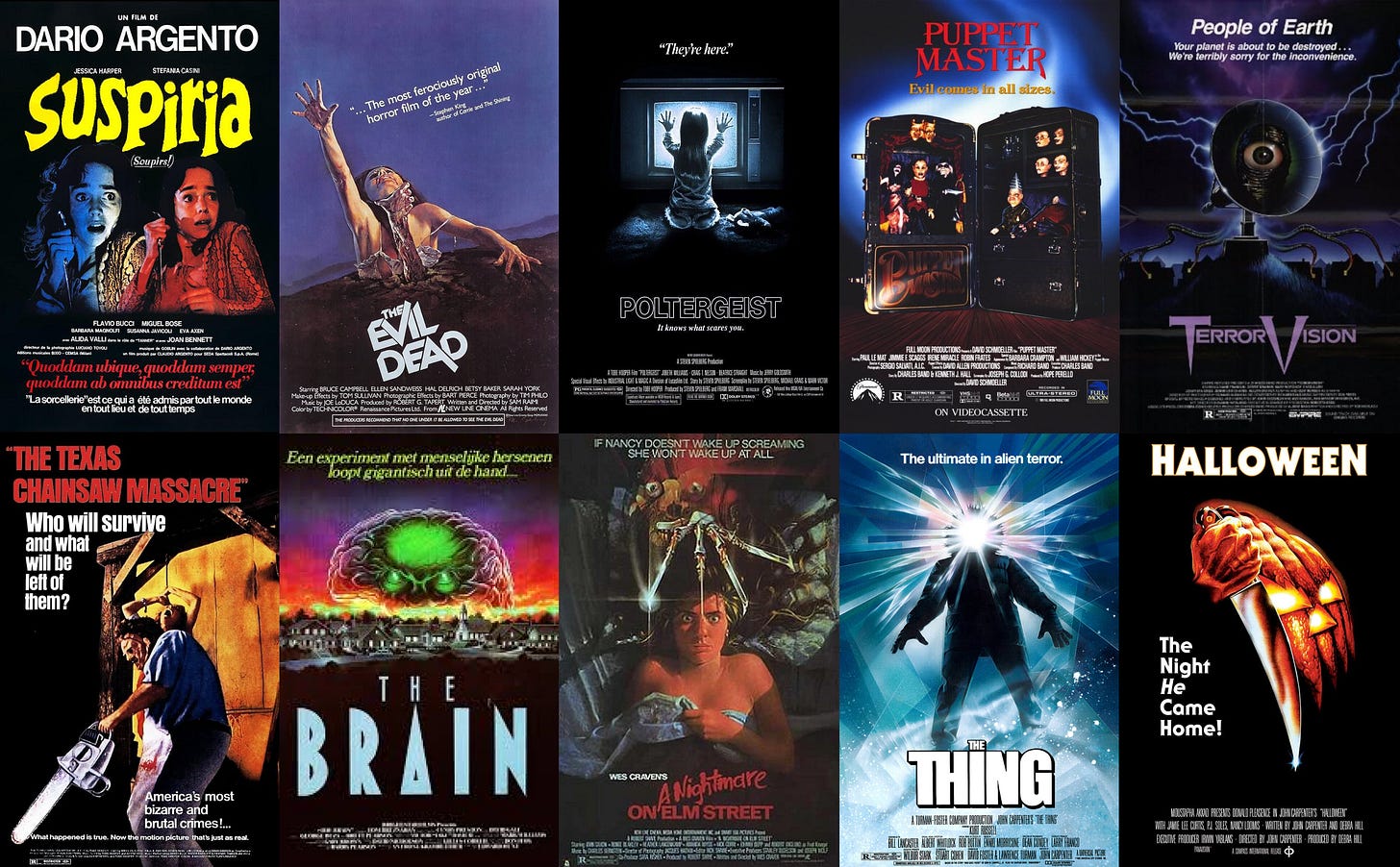
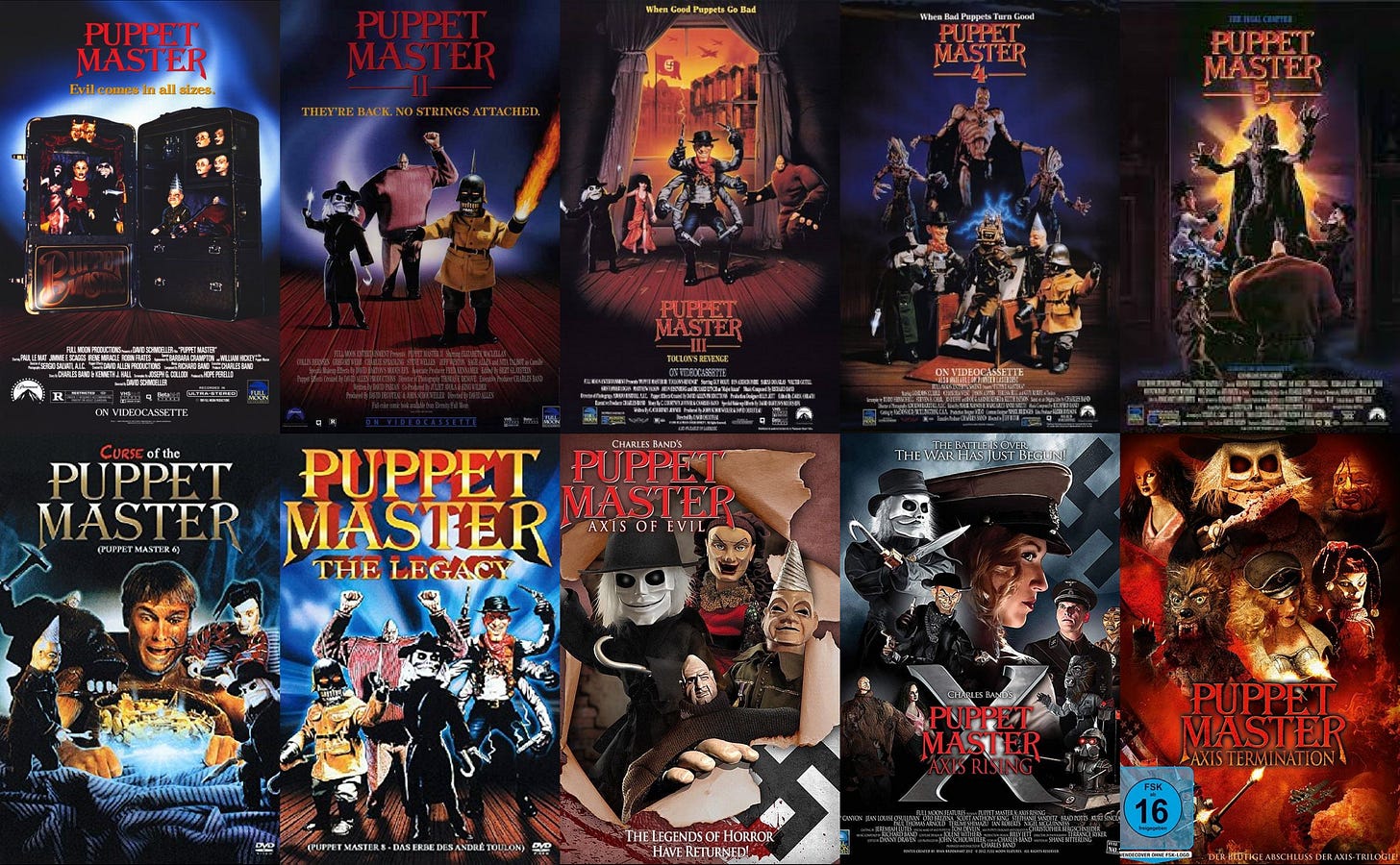
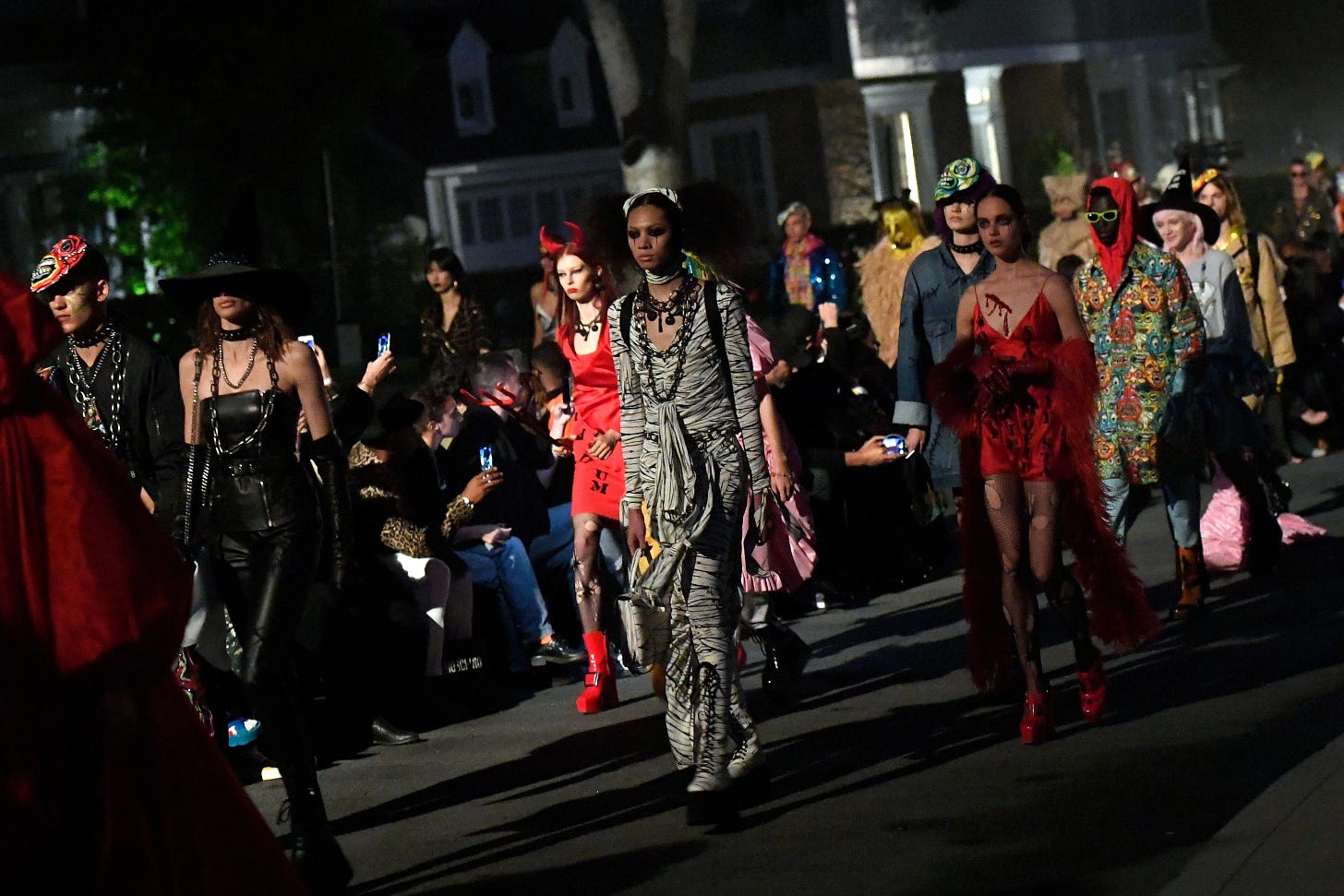
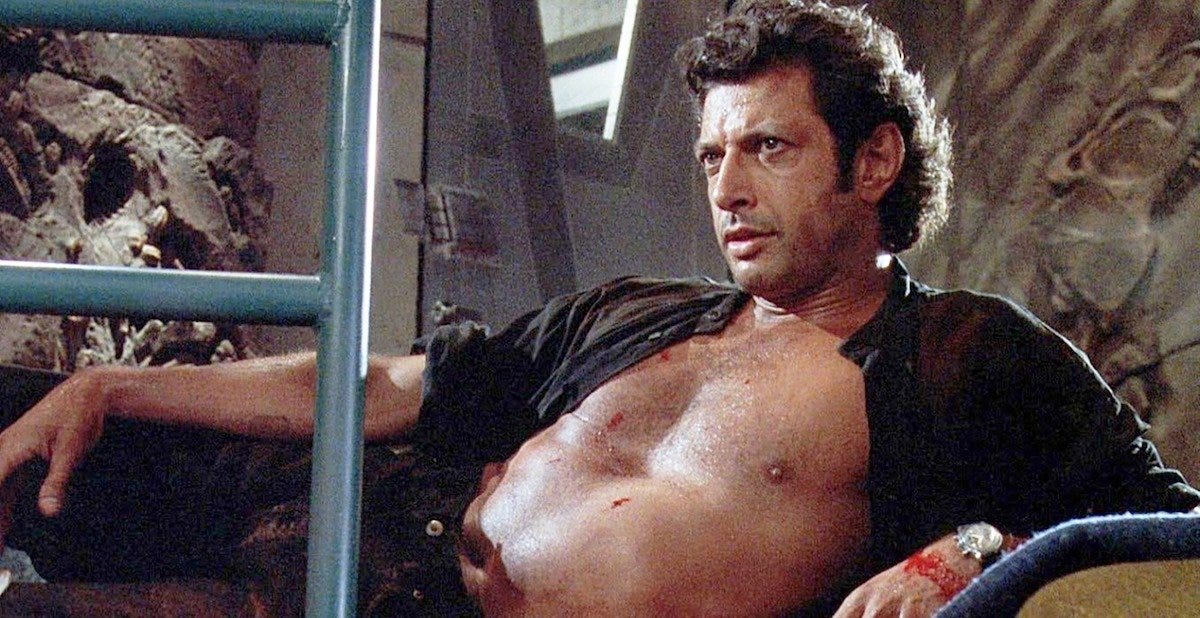
Great arrticl! All those movies are amazing, i recently rewatched Terrorvision again, what a masterpiece!
Thanks for talking about TerrorVision! That is one of my all time childhood faves!